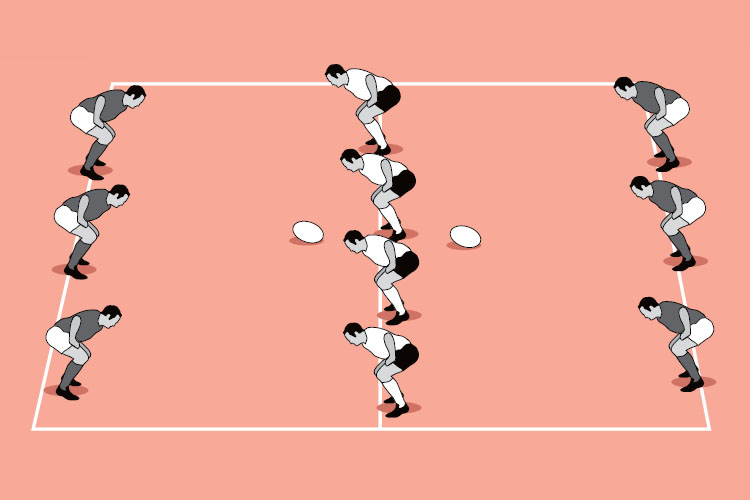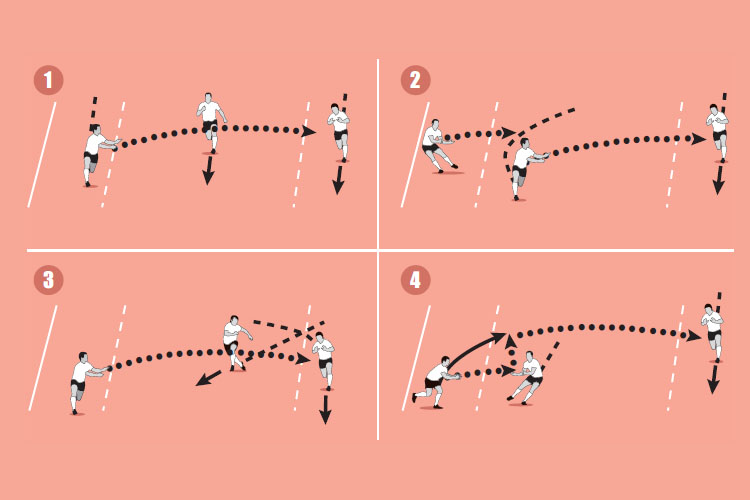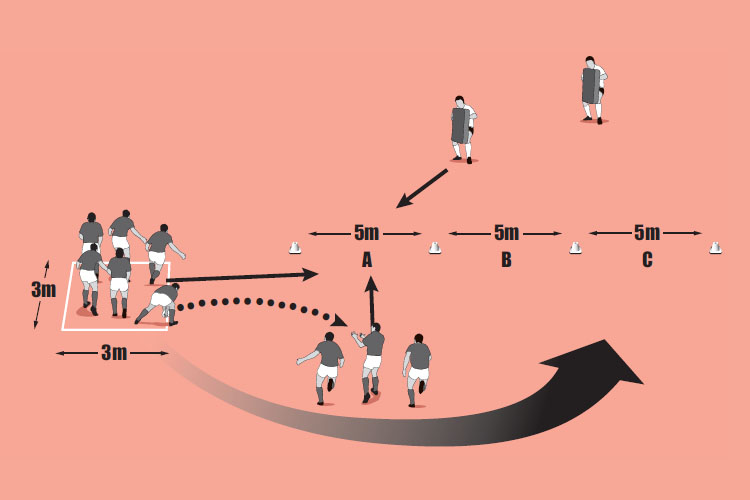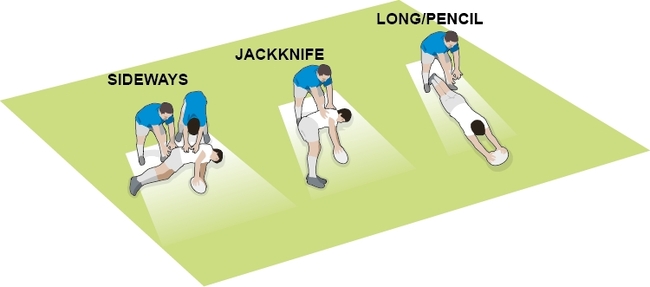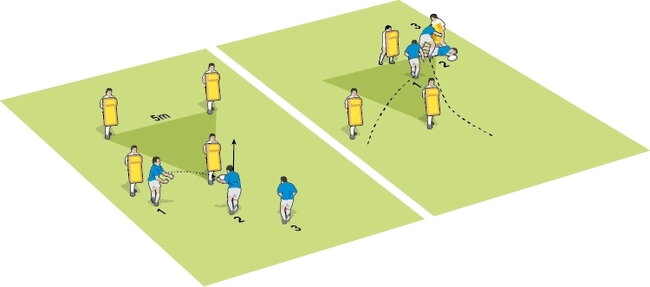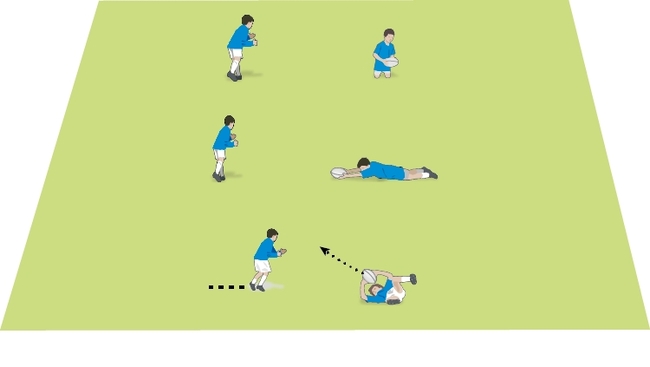Maximum Shove
A strong body position at the contact situation allows the player to exert the “maximum shove”. The principles remain the same for scrums, rucks or mauls. This session concentrates on the moments just before contact, highlighting the need to be in position quickly and efficiently.
Warm up time: 7-10
Session time: 5-10
Development time: 10-15
Game time: 15-20
Warm down time: 7-10
What to think about
How near to the contact situation should players get before bending? It is better to bend early to avoid being too high before the contact situation. Sometimes players can touch both hands on the ground, which helps them “square up”. However the player needs to be balanced so he can react to the changing contact situation in front of him. How quickly should a player approach the contact situation? Avoid long run ups to the contact situation in training because this rarely happens in the game. Players are better off slowing down and using leg drive from a strong position to create go-forward at the contact. It is better to be accurate rather than quick.set-up
- From a standing position, feet a shoulder width apart, bend at the hips first and then the knees. Do not look up by adjusting your neck.
- Going into contact drive-in with the shoulder and use short steps.
What you get your players to do
Split your players into pairs, one to coach, the other to perform. One player stands up straight and relaxes. He bends at the hips, then knees, so he is on the balls of his feet, with the back straight. The other player checks his form. They swap and repeat. They then walk 5 metres and back get into position before running 5 metres and repeating. Check for accurate form and shape at all stages.Development
Three pairs work at each station. One pair hold a pad each about 2 metres apart, another stand at the sides of a box. The third pair work: one stands in the middle of the pads and drives into each pad, the other runs up and down the box, passing the ball to the static players. After six hits these players swap over. Work each pair for 30 seconds and then swap them around.
Related Files
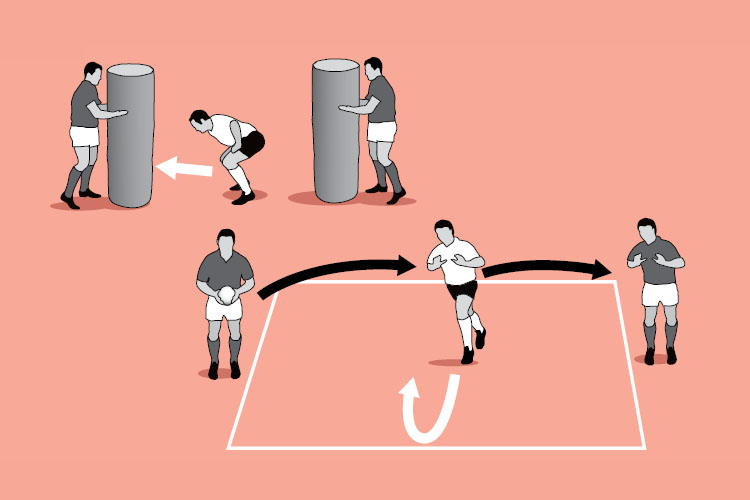
Game situation
In a new box, put 4 attackers in the middle, with 3 defenders at each end. Place a ball in each half. The attackers try to score at one end. The defenders can only move once the ball is picked up. The attackers fail if they lose the ball or the attack stops going forward for more than three seconds. They then have to attack the other way. Stop after a minute and swap the players around.What to call out
- “Keep your head neutral, so your neck is neither stretched forward or back”
- “Don’t bend your knees before the hips”
- “Focus on making contact with your shoulder”
Newsletter Sign Up
Coaches Testimonials

Gerald Kearney, Downtown Las Vegas Soccer Club

Paul Butler, Florida, USA

Rick Shields, Springboro, USA

Tony Green, Pierrefonds Titans, Quebec, Canada
Subscribe Today
Be a more effective, more successful rugby coach
In a recent survey 89% of subscribers said Rugby Coach Weekly makes them more confident, 91% said Rugby Coach Weekly makes them a more effective coach and 93% said Rugby Coach Weekly makes them more inspired.
Get Weekly Inspiration
All the latest techniques and approaches
Rugby Coach Weekly offers proven and easy to use rugby drills, coaching sessions, practice plans, small-sided games, warm-ups, training tips and advice.
We've been at the cutting edge of rugby coaching since we launched in 2005, creating resources for the grassroots youth coach, following best practice from around the world and insights from the professional game.

